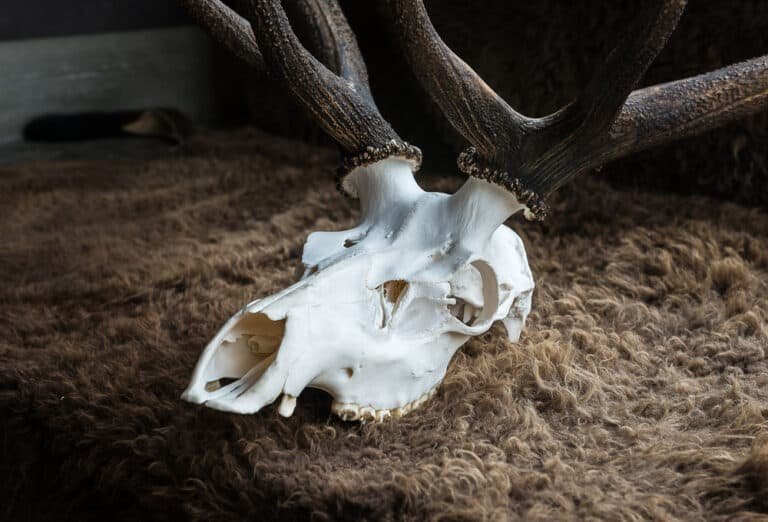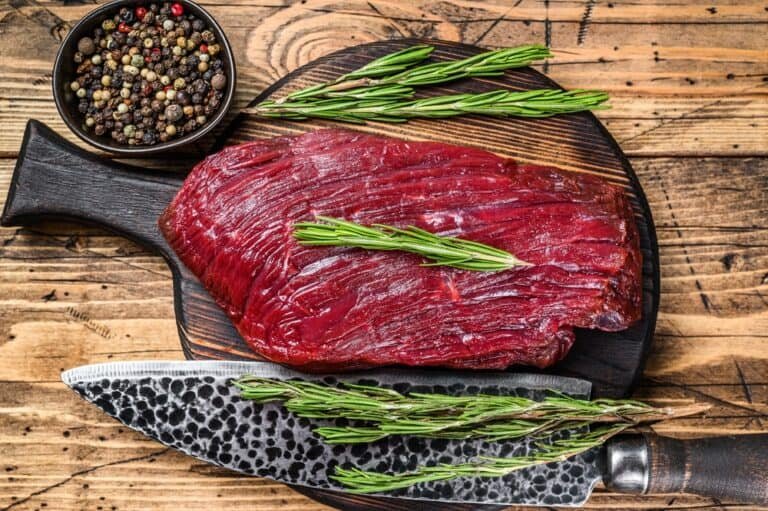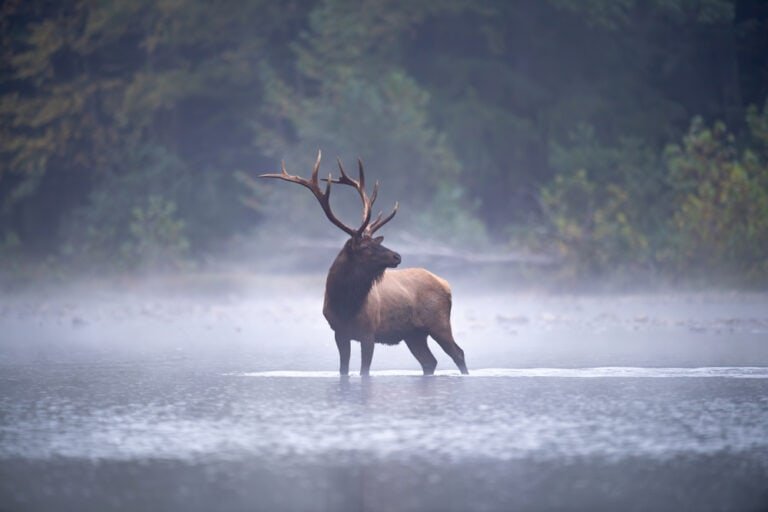Pennsylvania Elk Hunting: The Powerful Guide for 2024
With its majestic landscapes and abundant wildlife, Pennsylvania has a thriving elk population. The state’s elk herd is primarily found in the north-central region, specifically in Elk County. These hunters are always reading for Pennsylvania Elk Hunting. Are you?

Hunting these magnificent creatures is an exhilarating outdoor activity and a regulated endeavor ensuring sustainable population management. The Pennsylvania Game Commission carefully monitors the elk population through surveys and data analysis. Hunting regulations are implemented to maintain a balanced ecosystem, including specific seasons, permits, and bag limits.
Preserving the ecosystem and managing the elk herd
Elk hunting is vital in preserving the delicate balance within Pennsylvania’s ecosystem. By actively managing the elk herd size through regulated hunting seasons, wildlife experts prevent overpopulation that can lead to habitat destruction and competition for resources among animals.
Moreover, controlled hunting helps maintain healthier herds by selectively removing older or weaker individuals, allowing younger ones with stronger genetics to thrive.
This benefits the herd’s overall health and maintains genetic diversity among the population. Therefore, elk hunting is crucial for conserving Pennsylvania’s natural heritage while ensuring long-term wildlife and habitat sustainability.
Pennsylvania elk hunting allows enthusiasts to immerse themselves in nature while contributing to responsible conservation efforts. Understanding the importance of this activity sets the foundation for appreciating its ecological significance and recreational value.
History of Elk in Pennsylvania
Early Extinction and Reintroduction Efforts
Pennsylvania’s history with elk is nothing short of fascinating. In the 19th century, due to unregulated hunting, habitat loss, and market hunting for their meat and antlers, the once-thriving elk population in Pennsylvania was driven to extinction.
By the late 1800s, these majestic creatures had disappeared entirely from the state. However, recognizing the ecological importance and cultural significance of elk, ambitious efforts were made to reintroduce them.
Successful Restoration Programs and Population Growth
Pennsylvania’s elk restoration programs have been remarkably successful, thanks to the relentless dedication of conservationists and wildlife agencies. The first attempt at reintroduction occurred in 1913, when a small group of Rocky Mountain elk from Yellowstone National Park was released into parts of north-central Pennsylvania.
Over time, these initial efforts laid a solid foundation for a thriving elk population in the state. Fast-forward to today—Pennsylvania boasts one of the largest wild elk herds east of the Mississippi!
The restoration programs have exceeded expectations with a remarkable growth rate over the past century. Today’s population is around 1,500-2,000 individuals spread across various counties such as Elk County (the namesake!), Cameron County, Clearfield County, etc.
The restoration success story is not just about numbers; it’s about how these magnificent creatures have become an integral part of Pennsylvania’s natural heritage once again. This trim enhances biodiversity and provides immense opportunities for wildlife enthusiasts and hunters.
The Pennsylvania Elk Herd

Size, Distribution, and Habitat Preferences of the Elk Herd
When it comes to the majestic Pennsylvania elk herd, size does matter! According to the latest estimates, this magnificent population comprises around 1,400 elk. These gentle giants roam more than 800 square miles in the north-central part of the state.
They prefer open woodlands and meadows to graze on lush grasses and brown shrubs. Their big appetites lead them to cover significant distances each for food.
Elk Behavior: Migration Patterns and Mating Rituals
Elk are creatures driven by instinct, and their behavior is profoundly influenced by two vital events: migration patterns and mating rituals. When it comes to migration, these impressive animals exhibit an awe-inspiring spectacle as they move from high elevations during summer to lower valleys during winter. This journey takes them through rugged terrains, following age-old migrants searching for suitable forage and shelter.
During mating season, or “the rut,” the forests come alive enthusiastically as male elk display their dominance and compete for mates. It’s a sight that will leave you breathless—powerful antler clashes echo through the trees while bugles pierce the air with limicolous battle cries.
Witnessing these rituals is an extraordinary experience that ignites a sense of wonder about the intricate web of nature’s design. So now that we’ve uncovered some intriguing insights into Pennsylvania’s elk herd – from their size, distribution, and habitat preferences to how migration patterns and mating rituals shape their behavior – let’s delve deeper into preparing ourselves for an unforgettable hunt in this magnificent land!
Preparing for an Elk Hunt in Pennsylvania

Licensing and Permits
Understanding the Lottery System
- Applications open during early spring/summer through the Pennsylvania Game Commission (PGC)
- Selected hunters receive a tag specifying their designated hunting zone
- A limited number of tags are available to maintain a sustainable elk population
- Must maintain valid hunting license in addition to elk tag
Important Dates
- Archery Season: September (specific dates set annually)
- Rifle Season: November (specific dates set annually)
- Application deadlines typically several months before the season starts
Essential Gear and Equipment

Lorem ipsum dolor sit amet, consectetur adipiscing elit. Ut elit tellus, luctus nec ullamcorper mattis, pulvinar dapibus leo.
Firearms and Archery Equipment
- Rifles: Choose calibers suitable for long-range accuracy and ethical harvesting
- Recommended calibers: .300 Win Mag, .308 Winchester, 7mm Rem Mag
- For archery: Minimum 60-pound draw weight recommended
- High-quality scope with good magnification (3-9x or better)
Clothing System
- Base Layer
- Moisture-wicking materials (merino wool or synthetic)
- Avoid cotton, which retains moisture
- Insulating Layer
- Fleece or wool mid-layers
- Multiple thin layers are preferred over a single thick layer
- Outer Layer
- Waterproof, breathable shell
- Quiet materials to minimize movement noise
- Choose appropriate camouflage patterns for Pennsylvania terrain
Essential Equipment
- Binoculars (10×42 recommended)
- Range finder
- GPS device or compass
- Field dressing kit
- Game bags for meat transport
- First aid kit
- Hydration system
- Hunting pack (2500-4000 cubic inches)
Advanced Hunting Techniques

Spot-and-Stalk Method
- Identify feeding areas, bedding grounds, and travel corridors
- Look for signs: tracks, droppings, wallows, and rubs
- Use topographic maps to identify likely elk habitat
Stalking Strategies
- Always approach from downwind
- Move slowly and deliberately
- Use terrain features for concealment
- Plan stalk routes in advance
- Take advantage of natural sound cover (wind, streams)
Calling Techniques
Bugling
- Most effective during rut (September-October)
- Mimics challenge calls from rival bulls
- Use sparingly – overcalling can alert elk
Cow Calls
- More versatile throughout the season
- Types include:
- Lost calf calls
- Estrus cow calls
- Assembly calls
- Mews and chirps
Advanced Calling Strategies
- Start soft and increase volume if necessary
- Learn to read elk responses
- Use calling sequences with appropriate pauses
- Combine different calls based on the situation
- Practice throughout the year
Understanding Elk Behavior
Pre-rut (Late August)
- Bulls separate from bachelor groups
- Begin establishing territories
Rut (September-October)
- Peak elk activity and vocalization
- Bulls gather and defend harems
- Best time for calling strategies
Post-rut (November)
- Bulls recover from rut
- Focus on feeding areas
- More predictable movement patterns
Daily Patterns
- Dawn and dusk: Peak movement periods
- Mid-day: Usually bedded in thick cover
- Weather affects movement significantly
- Moon phases can influence activity
Field Care and Recovery

After the Shot
- Wait appropriate time (30-60 minutes minimum)
- Mark exact shooting location
- Track methodically, marking blood trail
- Be prepared for extended tracking
Field Dressing
- Remove internal organs promptly
- Cool meat quickly
- Keep meat clean and debris-free
- Use game bags to protect meat
- Have plan for meat transport
Safety Considerations
- Wear the required blaze orange during firearms season
- Maintain clear shot identification
- Know your effective shooting range
- Carry an emergency communication device
- Share the hunt plan with others
- Be prepared for weather changes
Ethical Considerations
- Take only ethical shots
- Practice shooting year-round
- Know shooting limitations
- Minimize impact on land
- Respect private property
- Follow fair chase principles
Remember: Success in elk hunting comes from preparation, patience, and persistence. Take time to develop skills and learn from each experience in the field.
Field Dressing an Elk in Pennsylvania

After a triumphant hunt, the real work begins – field dressing the elk. Properly field dressing your elk is essential to preserve the meat and ensure its quality for consumption. Here are some techniques to follow:
The First Incision: Getting Started
Once you have taken a moment to savor your accomplishment, carefully position the elk on its back with its legs spread apart. Begin by making an incision along the belly from the genitals to the chest cavity using a sharp knife. Be cautious not to puncture any organs or intestines during this process.
Gutting and Cleaning
Next, reach inside the chest cavity with your hands and start removing all internal organs. This includes removing the heart, lungs, liver, and intestines. It’s crucial to handle these organs carefully as they can contaminate the meat if punctured or damaged.
Cooling Down
To maintain meat quality, it’s advisable to cool down your elk as quickly as possible after field dressing it. Consider packing bags of ice or keeping it in a shaded area while you complete other necessary tasks.
Processing Elk
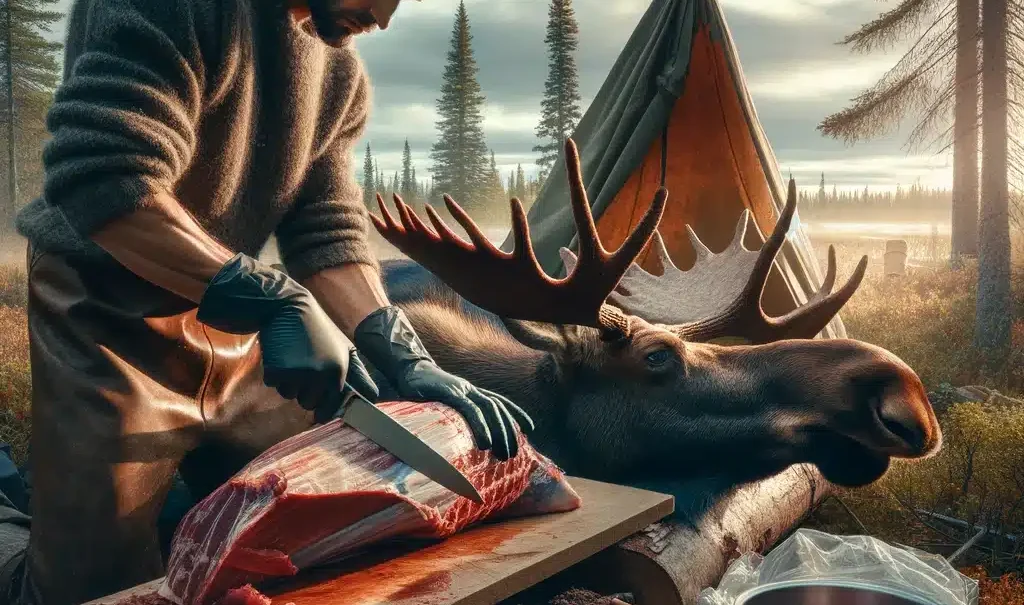
Maintaining Hygiene Standards
Cleanliness is crucial when processing elk meat. Ensure that all tools used for cutting or handling are properly sanitized before starting and throughout the process. This helps prevent contamination and preserves freshness.
Cutting Techniques
Efficient cutting techniques are vital when processing elk meat to maximize yield and minimize waste. Based on personal preferences, familiarize yourself with various cuts, such as steaks, roasts, ground meat, and sausage.
Adhering to Regulations
Pennsylvania elk hunting regulations include specific requirements for processing and transporting harvested game meat. It is essential to familiarize yourself with these regulations and follow them diligently to avoid any legal repercussions.
Utilizing the Meat
Elk meat is incredibly versatile and can be used in various dishes. Experiment with recipes such as elk stews, burgers, or marinated steaks.
Remember to cook the meat thoroughly for optimal flavor and food safety. By following proper field dressing techniques and efficiently processing your elk meat while adhering to regulations, you can ensure a successful hunt leads to delicious meals enjoyed by family and friends for months.
Cooking with Elk Meat

Popular Recipes Showcasing the Versatility of Elk
When it comes to cooking with elk meat, the possibilities are as vast as the picturesque Pennsylvania landscapes where these majestic creatures roam. The lean and flavorful meat of an elk lends itself well to various culinary creations. From hearty stews to tender steaks, here are a few popular recipes that truly showcase the versatility of this remarkable game meat.
Elk Chili con Carne: A Spicy Delight
For those chilly evenings after a long day spent hunting in Pennsylvania’s wilderness, nothing warms the soul quite like a bowl of hearty elk chili. Start by sautéing some minced onions and garlic in a large pot until they turn golden brown. Then add chunks of succulent elk meat and let it sear on all sides.
Sprinkle in your preferred chili spices – cumin, paprika, cayenne pepper – and stir until fragrant. Pour in crushed tomatoes, kidney beans, and beef broth before letting it simmer for a couple of hours to allow all those flavors to meld together into a mouthwatering concoction.


Pan-Seared Elk Medallions: A Tender Treat
If you’re looking for an elegant dish that showcases the tenderness and flavor of elk meat while keeping it simple, pan-seared elk medallions are sure to impress. Begin by seasoning thick slices of elk tenderloin with salt and pepper.
Heat some butter or oil in a skillet over medium-high heat until it sizzles enticingly. Place the seasoned medallions carefully into the skillet and let them sear for about 2-3 minutes on each side for medium-rare doneness (adjust cooking time based on personal preference).
The result is tender meat with a beautiful caramelized crust. Serve with roasted vegetables or a side of creamy mashed potatoes for a delightful meal.
Conclusion
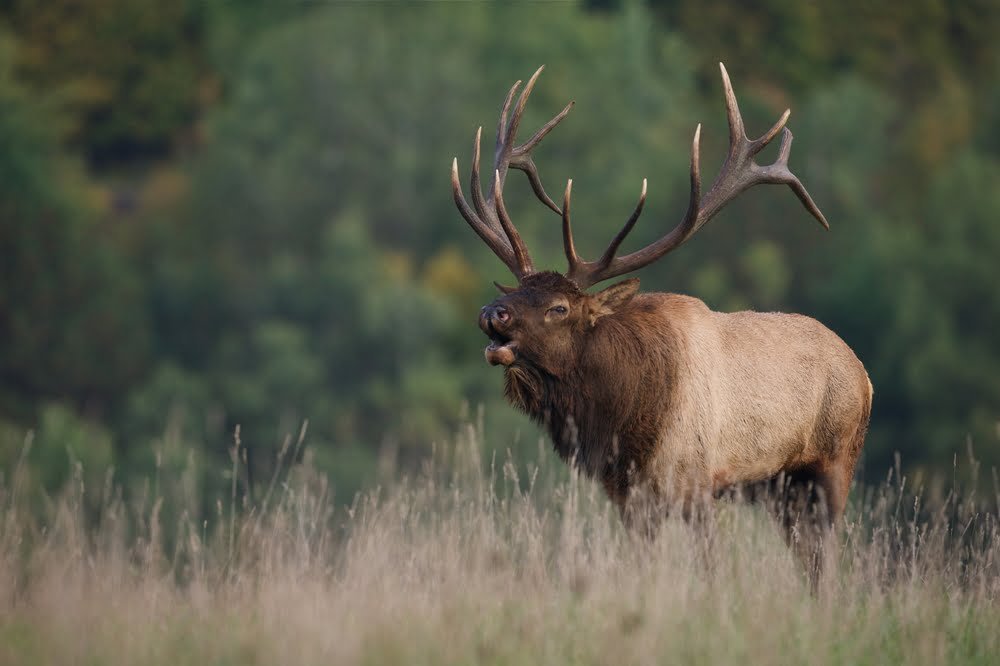
In the heart of Pennsylvania’s wild expanses lies a world of adventure and opportunity, where hunters can experience the thrill of tracking and pursuing the majestic elk. Beyond the excitement of the hunt, Pennsylvania elk hunting offers so much more, including conservation efforts that support healthy ecosystems and preserve this magnificent species for generations to come.
And when it comes to cooking with elk meat, its natural flavors and versatility allow for an array of delicious recipes that satisfy both culinary enthusiasts and lovers of sustainable, ethically sourced food. So venture into this captivating realm, embrace the challenges and rewards of hunting elk in Pennsylvania, and relish in the unforgettable experiences that await you amidst nature’s grandeur.

